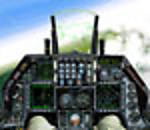Laurie,
I ran across this thread and, if you don't mind, here is something I've recently written on the many uses of Future Floor Wax/Polish and which I plan to add to my hobby website one of these months (I haven't updated it in almost a year, but it doesn't get that much traffic anyways

)
As versatile as the stuff is, I consider it a 'tool' as much as an acrylic 'paint':
Future Floor Polish floor wax (or now "Pledge with Future Shine") is nothing more than clear acrylic paint which has many uses in the scale plastic model hobby.
Benefits:
1. It stays clear (will not yellow for decades).
2. Does not go on thick, and dries to a thin layer.
3. Is 'self-leveling', i.e. after brushing or spraying on it will 'run' to an overall singular thickness. As long as the piece is left to dry in a position where the Future Floor Polish cannot pool in any deep recesses, the excess tends to run off without 'pooling'.
4. Can be mixed with other acrylic paint to create 'smoked' or tinted colors.
5. Will not harm water-slide decals or dry-transfers. (Test on a spare decal or part of the sheet first).
6. Can be airbrushed right out of the bottle with no thinning required.
7. Most small air bubbles which appear when brushed on will 'pop' or dissipate while drying.
8. Does not interact poorly with other types of paint once dry. In other words: works great when sprayed with 'dull coat' or other finishes, or when details are painted by brush.
Uses:
1. Clear plastic: will make clear parts look shiny and appear thinner than the plastic really is. Also repels dust and prevents yellowing or the discoloration found on clear plastic auto headlights. Great for aircraft canopies, windows, landing and formation lights; automobile windshields, windows, and headlamps; and armor headlamps, spotlights, periscope blocks, and IR lights; etc.
Application: a. Prep the part as you would regularly do (small parts such as headlights or formation lights might be better left on the sprue.)
b. For large parts:
1) Prep the Future Floor Polish: pour enough in a container to dip the part into. Add enough of an acrylic color to the container to create a 'tint'.
2) Dip the piece in the container of Future Floor Polish.
3) Remove and allow the part to dry on a paper towel, with minimum contact to the towel. For canopies: it is best to allow the canopy to lay on the canopy rail as the canopy would sit on the completed aircraft.
c. For small parts (or large parts if desired)
1) Paint the part with Future Floor Polish applied liberally with a paint brush
2) Allow the part to dry on a paper towel, with minimum contact to the towel. If possible, allow only the sprue tree to make contact with the paper towel.
2. Decal base: decals adhere best to a smooth surface. Future Floor Polish is smoother than most 'gloss coats' out of a rattle can, and tends to go on thinner while providing that smooth surface. It also makes a great decal sealer to protect the decal from subsequent steps, i.e. weathering or washes.
Application: a. Brush the Future Floor Polish on for small areas, or airbrush large areas, or the whole kit, to maintain color consistency
b. Allow Future Floor Polish to completely dry
c. Apply decal as normal, using your regular decal solution
d. Allow decal to completely dry and set
e. Apply another layer of Future Floor Polish over the whole decal and adjacent area, or the whole kit.
3. Acrylic base for Artists' Oil application: slow drying Artists' Oils do not 'eat away at' nor penetrate acrylic paints nor Future Floor Polish, and are therefore great for washes, weathering, and other techniques applied over a layer of acrylic Future Floor Polish. In most instances the Artists' Oil paint can be completely wiped off the Future Floor Polish allowing the modeler to try the application again. Once dry the Artists' Oil paint adheres well to the Future Floor Polish.
Application: a. Brush the Future Floor Polish on for small areas, or airbrush large areas, or the whole kit, to maintain color consistency
b. Allow Future Floor Polish to completely dry
c. Mix and thin the Artists' Oils to the desired color and consistency
d. Liberally apply to the area desired, or apply a 'sludge wash' to the whole kit or piece
e. Wipe off the excess using low-lint paper towels, cotton swabs, and/or paint brushes, leaving the desired amount on the kit or piece
f. If not satisfied with the results, wipe off as much of the oil wash as possible and repeat steps c. thru e.
f. Once satisfied, allow the piece or kit to dry thoroughly. This can take up to three days depending on the paint, the thinner used, and the thickness of the application
I hope this helps. Happy Modelling!
Keith




















